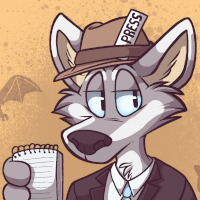The Suspended Castle – Book Review by Fred Patten.
by Patch O'Furr
Submitted by Fred Patten, Furry’s favorite historian and reviewer.
The Suspended Castle, by Fred. [Translated by Richard Kutner.]
NYC, Candlewick Press/TOON Books, October 2015, hardcover $16.95 (53 [+ 1] pages).
 The Suspended Castle (Le Château Suspendu) is Book 3 in the Philémon series by Fred (Frédéric Othon Théodore Aristidès, 1931-2013), serialized in the classic French comics magazine Pilote. The weekly strip was collected into 15 books between 1972 and 1987. Fred retired leaving Philémon’s adventures uncompleted, until he wrote/drew a 16th volume to finish the series just before his death.
The Suspended Castle (Le Château Suspendu) is Book 3 in the Philémon series by Fred (Frédéric Othon Théodore Aristidès, 1931-2013), serialized in the classic French comics magazine Pilote. The weekly strip was collected into 15 books between 1972 and 1987. Fred retired leaving Philémon’s adventures uncompleted, until he wrote/drew a 16th volume to finish the series just before his death.
Book 1, Cast Away on the Letter A, was reviewed here in January, and book 2, The Wild Piano, in June. Fred’s Philémon was/is a surrealistic cartoon strip in the tradition of Winsor McCay’s Little Nemo in Slumberland and George Herriman’s Krazy Kat. Philémon is a teenage farmboy in the French countryside of the 1960s-‘70s who falls down a well and has psychedelic adventures on the literal letters ATLANTIC of the Atlantic Ocean of a parallel world. The series is only marginally anthro-animal, but it contains many imaginative fantastic animals in bizarre settings that lovers of top-quality newspaper comic-strip art, and furry fans, will want to see. Philémon, and Fred’s other works, have been hits in France for almost fifty years, almost constantly in print.
In the first two albums, teenager Philémon falls down an abandoned old well on his father’s farm in the French countryside and has fantastic adventures on the two A’s of the ATLANTIC ocean of a parallel world. He meets Mister Bartholomew (Barthélémy), an old Robinson Crusoe-like hermit from our world who was cast away onto the first A forty years ago. Philémon returns to his skeptical father Hector’s farm at the end of Cast Away on the Letter A, but he accidentally leaves Mr. Barthlomew behind. In The Wild Piano, Phil’s Uncle Felix (Félicien) turns out to be an amateur magician who knows how to return to the parallel world. (The “portal” is a different fantastic method each time.) He sends Phil back to rescue Mr. Bartholomew, which he does after more adventures on the letter N.









